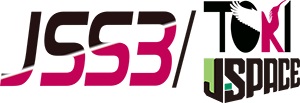Aerodynamics of Re-entry Vehicle System with Inflatable Ballute
JAXA Supercomputer System Annual Report February 2023-January 2024
Report Number: R23EACA57
Subject Category: JSS Inter-University Research
- Responsible Representative: Hirotaka Otsu, Professor, Ryukoku University
- Contact Information: Hirotaka Otsu, Professor, Ryukoku University(otsu@rins.ryukoku.ac.jp)
- Members: Hirotaka Otsu
Abstract
To determine the aerodynamic characteristics of a flight vehicle equipped with an inflatable ballute. In particular, the influence of the deformation of the ballute on the aerodynamic characteristics will be investigated.
Reference URL
N/A
Reasons and benefits of using JAXA Supercomputer System
There have been many shapes depending on the deformation of ballute with various flight conditions such as Mach number and the tilt angle.
Achievements of the Year
In this year’s analysis, we investigated the flow field around a flight vehicle equipped with a ballot in the transonic region. The baloot geometry was created using OpenSCAD, a software program that can create geometry using mathematical formulas. The grid required for the analysis was created using HexaGrid v1.2.1, and the analysis was performed using the JSS version of FaSTAR. In the transonic region, the shock wave formed around the experimental wind tunnel model is strongly reflected by the flow path in the wind tunnel. To reproduce this phenomenon, a dense computational grid was created over almost the entire computational domain, and a target wall condition was set on the wall surface to account for reflections in the channel. As a result, it was possible to qualitatively reproduce the shock wave formed in front of the model and the shock wave reflected in the wind tunnel channel.
Publications
– Oral Presentations
“Fabrication of experimental wind tunnel model using 3D printer and its application to transonic wind tunnel experiments,” ISAS2023-SFMA-023
Usage of JSS
Computational Information
- Process Parallelization Methods: MPI
- Thread Parallelization Methods: N/A
- Number of Processes: 64 – 192
- Elapsed Time per Case: 60 Minute(s)
JSS3 Resources Used
Fraction of Usage in Total Resources*1(%): 0.00
Details
Please refer to System Configuration of JSS3 for the system configuration and major specifications of JSS3.
| System Name | CPU Resources Used(Core x Hours) | Fraction of Usage*2(%) |
|---|---|---|
| TOKI-SORA | 592.92 | 0.00 |
| TOKI-ST | 27.69 | 0.00 |
| TOKI-GP | 0.00 | 0.00 |
| TOKI-XM | 0.00 | 0.00 |
| TOKI-LM | 0.00 | 0.00 |
| TOKI-TST | 0.00 | 0.00 |
| TOKI-TGP | 0.00 | 0.00 |
| TOKI-TLM | 0.00 | 0.00 |
| File System Name | Storage Assigned(GiB) | Fraction of Usage*2(%) |
|---|---|---|
| /home | 0.00 | 0.00 |
| /data and /data2 | 0.00 | 0.00 |
| /ssd | 0.00 | 0.00 |
| Archiver Name | Storage Used(TiB) | Fraction of Usage*2(%) |
|---|---|---|
| J-SPACE | 0.00 | 0.00 |
*1: Fraction of Usage in Total Resources: Weighted average of three resource types (Computing, File System, and Archiver).
*2: Fraction of Usage:Percentage of usage relative to each resource used in one year.
ISV Software Licenses Used
| ISV Software Licenses Used(Hours) | Fraction of Usage*2(%) | |
|---|---|---|
| ISV Software Licenses(Total) | 0.00 | 0.00 |
*2: Fraction of Usage:Percentage of usage relative to each resource used in one year.
JAXA Supercomputer System Annual Report February 2023-January 2024



